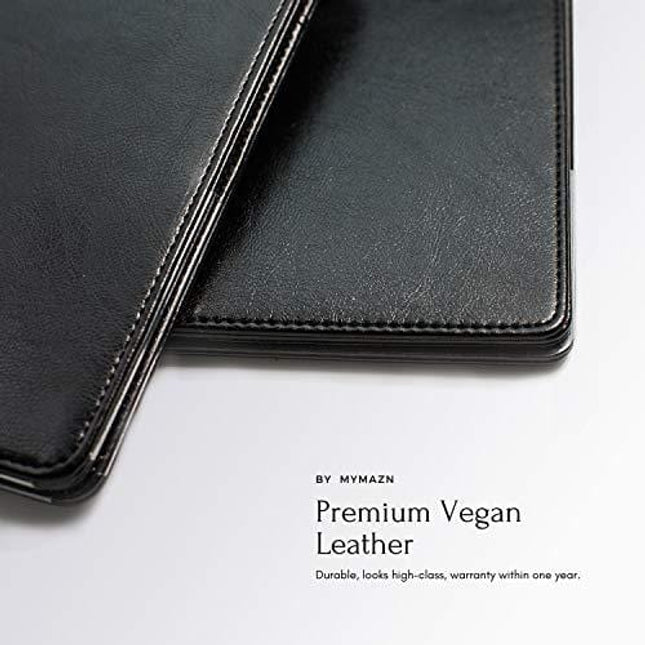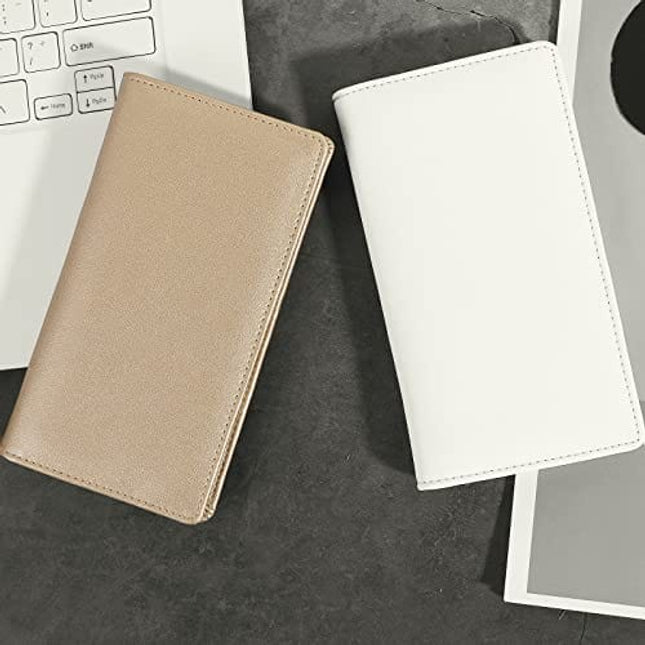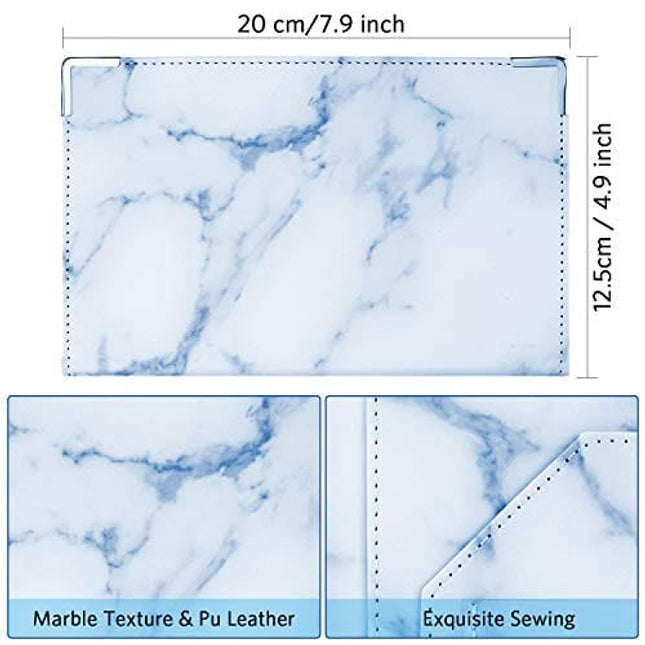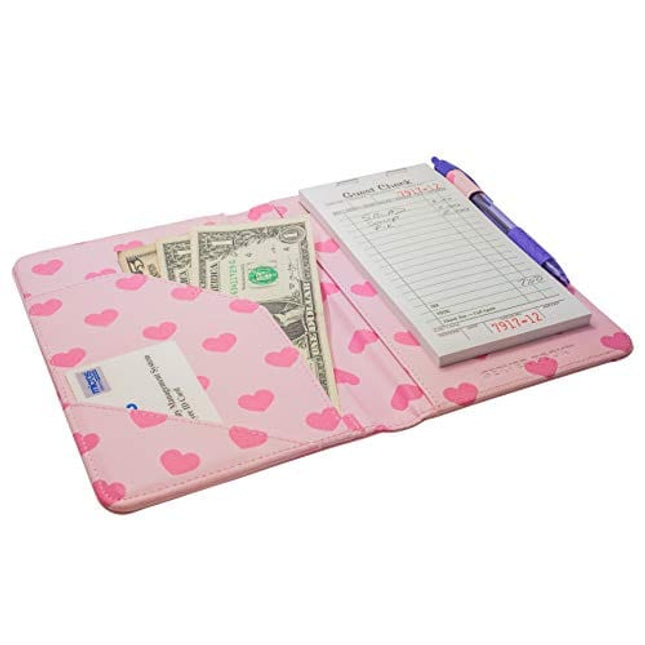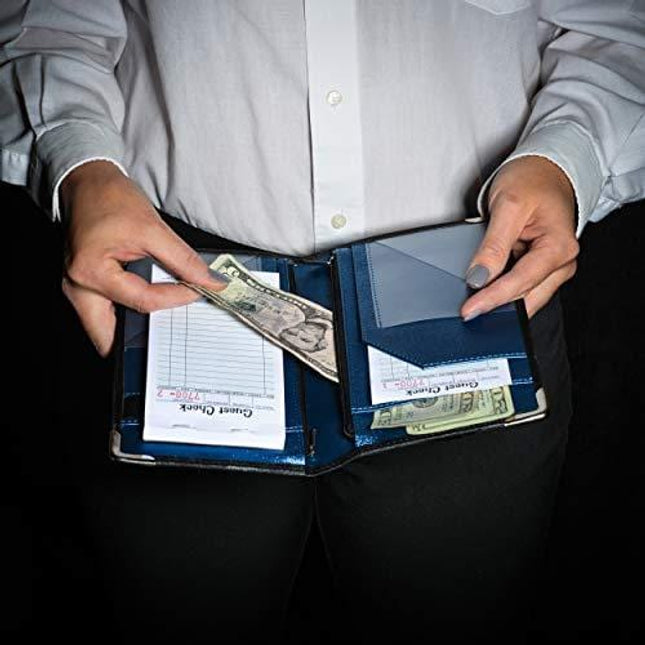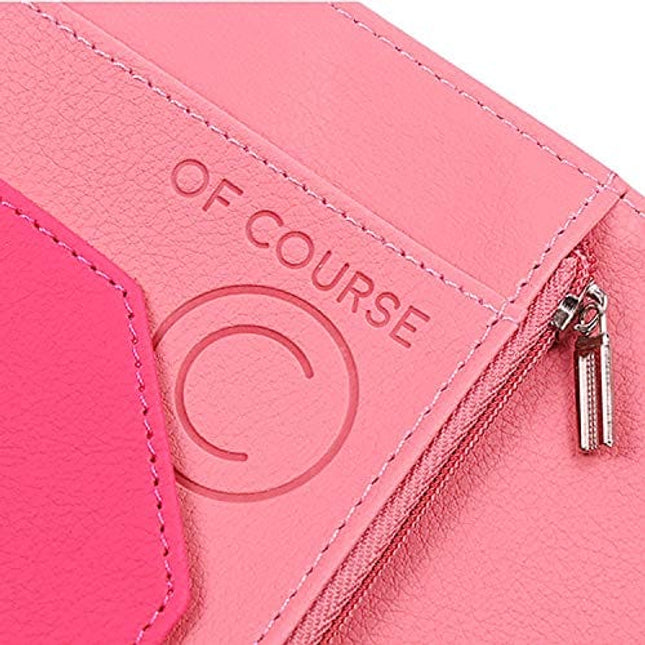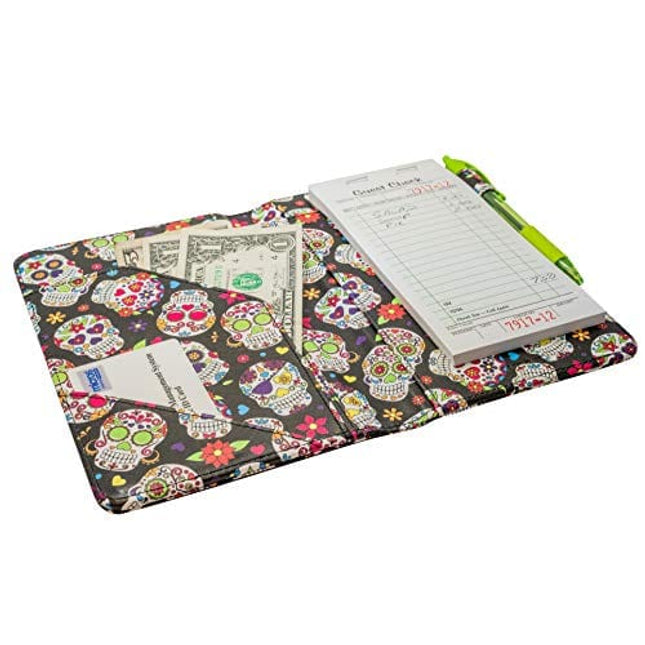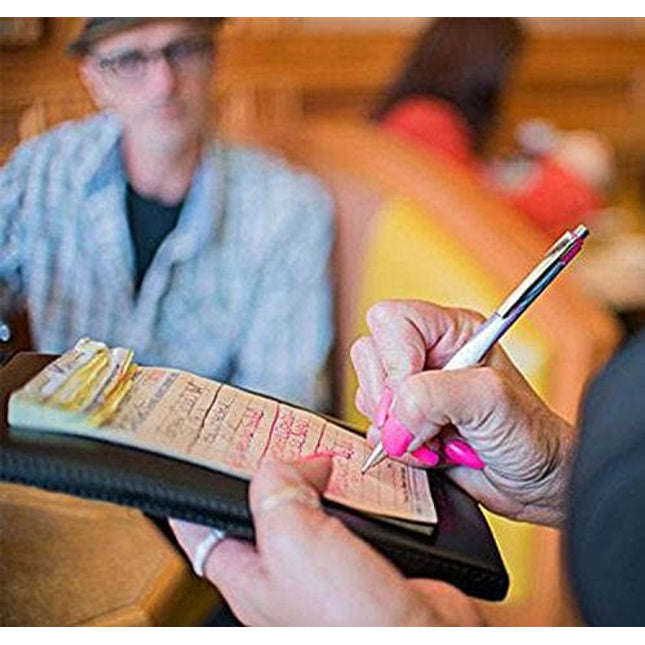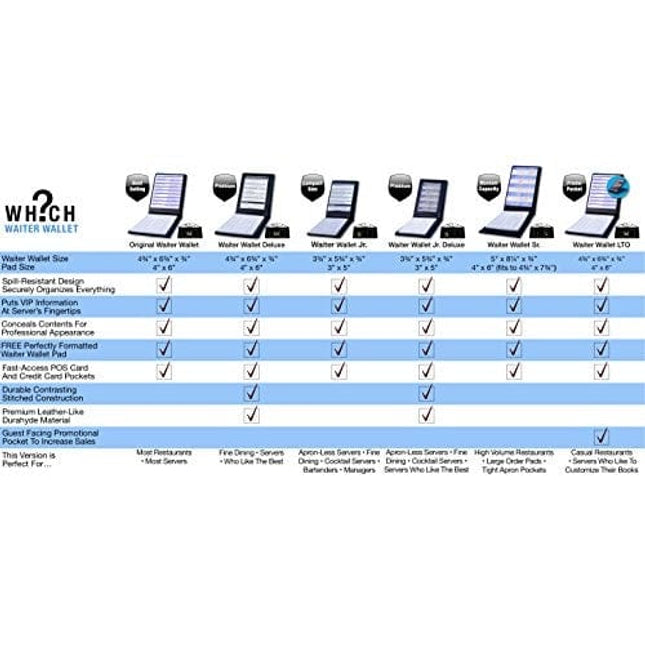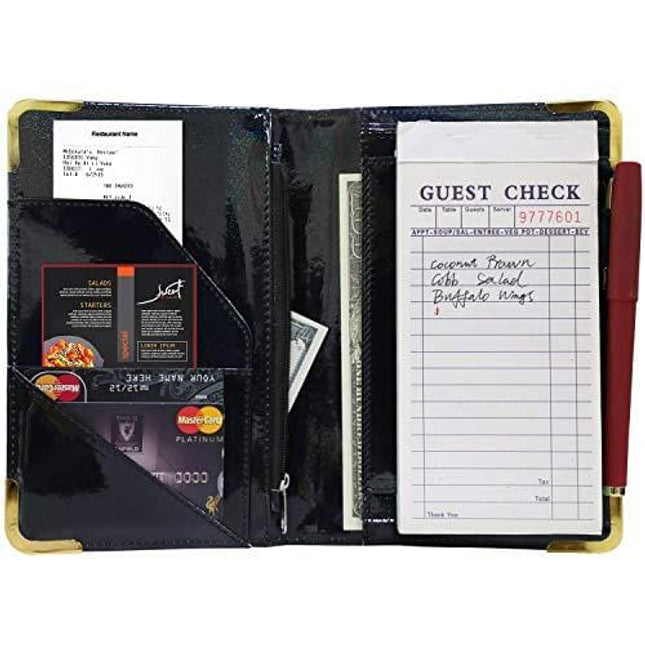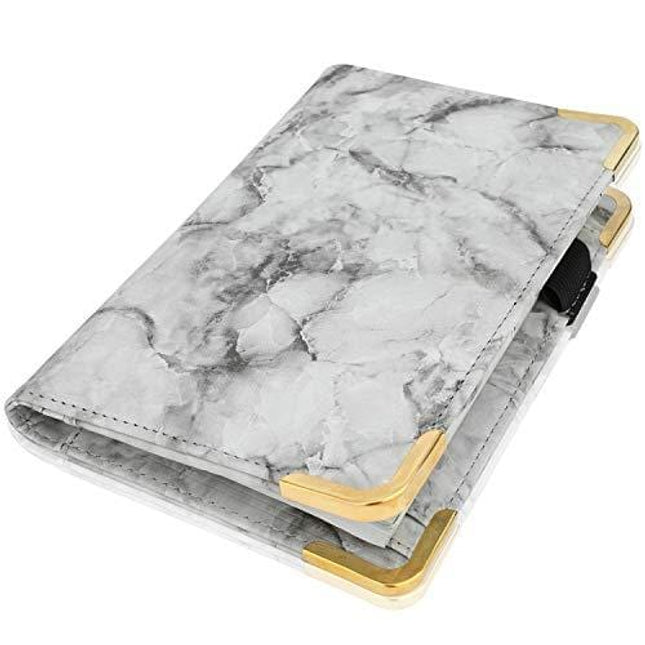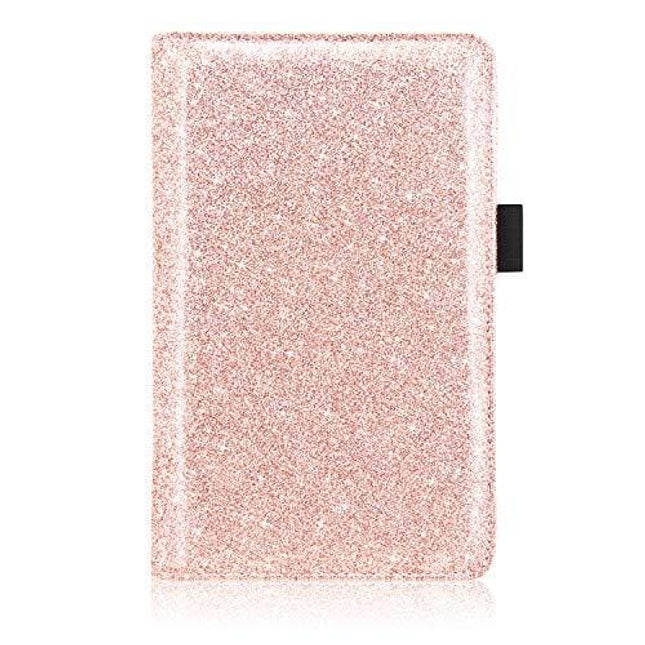Check presenters are used at the end of the meal. They are used to show the price to the customers after the meal has been finished. Customers then pay by inserting the cash or card into the checkbook, and the server retrieves it.
Parts of a Check Presenter
This is where the receipt is placed for customers to look and assess how much they should pay and tip.
This is where customers place the tip in a separate pocket. Tips are the sum of money you give to your servers. The money goes directly to the servers to make a liveable wage.
This is where the check pad goes to, but sometimes servers would remove the check pad when it’s time to bill customers to avoid confusion when checking the bill.
Cards are difficult to replace and could cost a lot of money and inconvenience. That’s why credit card slots are there to keep the card secure during processing.
Features of a Checkbook
These are regularly used for customers who do not have a seating plan. The stub is torn off from the bill, which includes the check number used to identify which order goes to where.
For order taking to be easier, menu prompts are in place to help servers and chefs communicate. They’re usually in abbreviations and are pretty easy to understand. Some abbreviations include APPT for appetizers or BEV for beverages.
These are illustrations of the tables you have in your restaurant. They usually show pivot points on where you could place yourself as you serve the orders. The pivot points help you deliver food without disturbing the guests and remind you which table you are serving.



